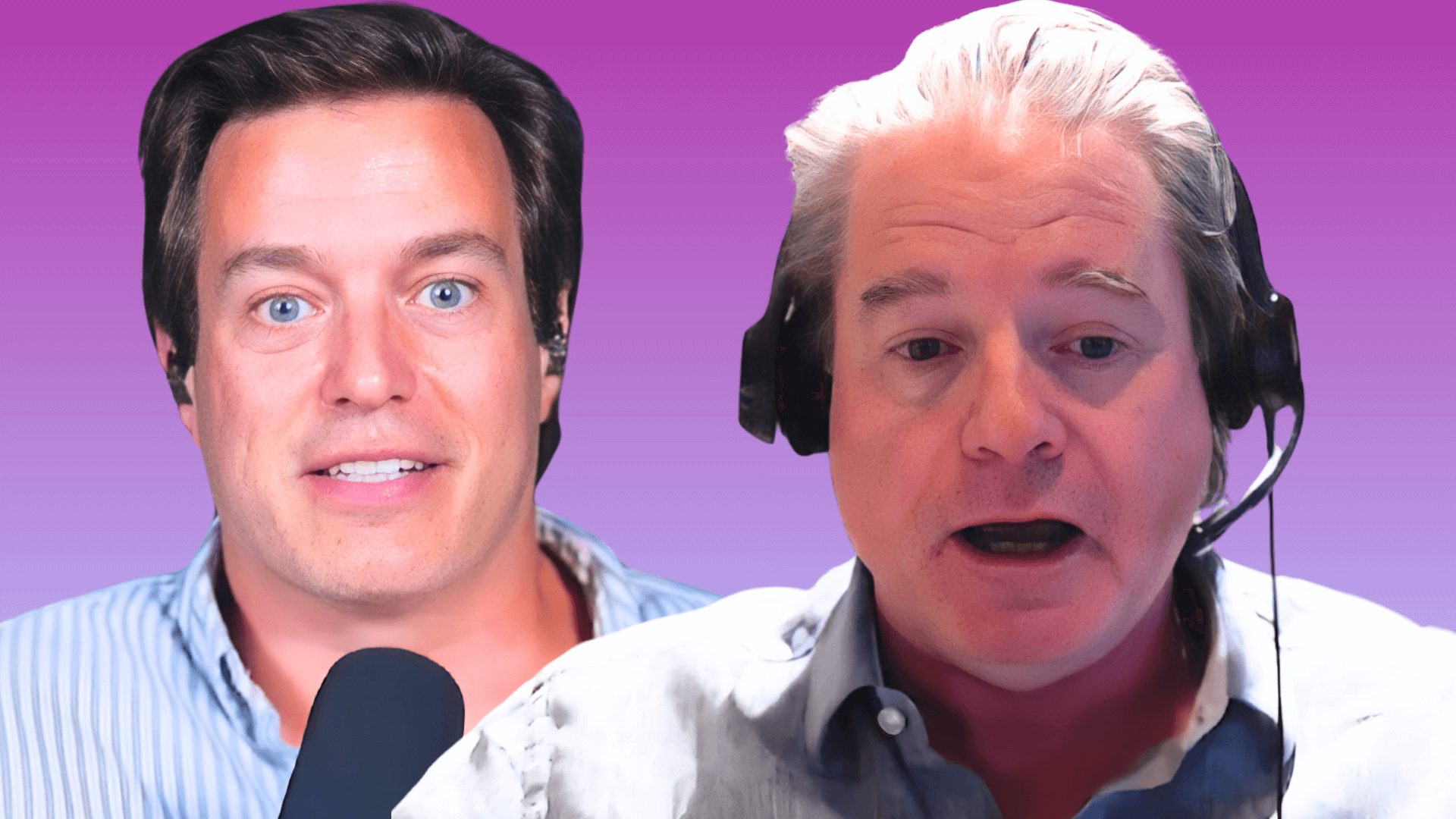Mental models and frameworks guide the way we make decisions in everyday life — but what are they, where do we get them, and how can we make sure we’re not sticking with outdated defaults?
The Cheat Sheet:
- Mental models are our beliefs about ourselves, the world, and everything in it.
- Our mental models are made up of past experiences, misunderstandings, incomplete facts, and intuitive perceptions — as a result, every mental model has shortcomings.
- Our mental models influence our actions, and our actions influence our mental models.
- Unhelpful mental models of the world can lead us to making bad decisions and taking ineffective actions; helpful mental models move us forward in life. We need to make sure we’re using the right tool for the right job.
- Even outdated mental models aren’t entirely valueless if we know how to adapt their relevant aspects to updated ones.
- And so much more…
[aoc-subscribe]
In order to make decisions that matter, we have to understand our own relation to the big picture. This is where mental models and frameworks come in.
Mental models and frameworks inform our beliefs about ourselves and everything around us. These are the lenses through which we perceive the world — how we reason our way through things. Here, we discuss how these mental models and frameworks form, what we can do to ensure we’re using the right ones for the decisions at hand, and how to discard the ones that no longer serve us.
Please Scroll down for Full Show Notes and Featured Resources!
Acuity Scheduling is your online assistant, working 24/7 to fill your schedule. The AoC family can go to AcuityScheduling.com/AOC to get 45-days free — that’s over three times as long as the standard trial!
With pain-free invoicing, FreshBooks helps entrepreneurs and freelancers save time and avoid a lot of the stress that comes with running a small business. Try a month of unrestricted use for free here (no credit card required)! Enter ART OF CHARM in the How You Heard About Us section.
More About This Show
If you’ve ever assembled furniture from IKEA, changed the oil in your car, fixed an irritating kitchen sink leak, or replaced a bicycle tire, you know having the right tools on hand was imperative for seeing the solution to your original problem through with the greatest of ease (with the possible exception of IKEA furniture — sometimes no tool’s going to do the trick).
In the same way, we use mental models as tools to get us through whatever the world throws our way. These mental models are psychological representations of real, hypothetical, or imaginary situations that guide how we see ourselves and the world around us.
The problem is, no mental model is complete. There’s no Swiss army knife version of a mental model that works for every circumstance; having the wrong mental model in place when it’s time to make an important decision can be like trying to use a hammer to repair a chipped teacup. Using the wrong tool just makes the job harder.
Where Do Mental Models Originate?
Over the course of a lifetime, we collect mental models based on what we experience, and they’re a two-way street: our mental models influence our actions, and our actions influence our mental models.
Throughout childhood, our mental models are most dramatically shaped by the family that raises us. So it’s important to keep in mind that, no matter how well-meaning our parents or guardians happen to be, they’re going to pass along mental models that worked for their generation, but may no longer be the right tools for today’s jobs.
For example, when AJ’s in Los Angeles or any other major city in the world, using a ridesharing service like Lyft or Uber to get from point A to point B is second nature. But when he visits his family in Michigan, they think he’s crazy to get in cars with strangers. AJ’s mental model has adjusted to regard ridesharing as just another kind of taxi service, wherein drivers are vetted and accountable. AJ’s parents’ mental model considers ridesharing services as akin to hitchhiking on the interstate.
While AJ and Johnny are very different people, they do share overlapping mental models from growing up in the Rust Belt — America’s blue collar industrial heartland — during a time when its importance was downgraded by outsourcing, automation, and other factors.
Before then, generations had been built on the promise of steady work in a manufacturing hub; people would live from high school to retirement age employed by the same company, and their children and grandchildren could expect to do the same.
“My earliest memories of family events and family reunions were the discussions around pensions and our grandparents getting to their retirement and how things were so guaranteed for them,” says AJ. “They were looking forward to their retirement. The company was going to take care of them because they put in all this hard work for that company.
“We started to see, through our youth, this whole idea of pensions, support from your community, and support from your workplace — your career — evaporate.”
The blue collar mental model of hard work — proven for so long as an effective way to get ahead in life and provide for one’s family — had ceased to function for these communities. There was no longer the guarantee of success in life for people who subscribed to this mental model.
As AJ and his sister got older, his father’s mental model adjusted to focus on the importance of a college education to safeguard them against the failures of the mental model he’d grown up with.
But this isn’t to say the entire mental model was worthy of the trash heap. For Johnny, even though he moved away to pursue musical ambitions, the aggressiveness and tenacity required for hard work served him well.
“No matter how I saw it as a child, I still couldn’t help but seep it into my own DNA of how I was going about doing things,” he says. “So for myself at 21 I had the opportunity to move to North Carolina and begin my music career, and I went at it in that exact fashion.”
Working Smarter, Not Harder
So the blue collar hard work mental model worked great for generations until the jobs started drying up and working harder than everyone else was no longer a guarantee for getting ahead. And aspects of this mental model still proved valuable when applied to other pursuits — long hours of study for AJ and marathon band practices for Johnny.
“It’s so funny because you have this mental model,” says AJ, “and you stick with it until it stops giving you results…and then you have two choices: a) you feel bad for yourself and blame the world, or b) you look for better tools.”
For AJ and Johnny in the infancy of AoC, the realization that hard work only got them so far was the motivation to look for better tools — after an initial bout of feeling sorry for themselves.
“If I was doing as much work as everyone else but I wasn’t getting results, then I was lacking in some area,” says AJ. “I started to see from successful people around us that it was more about who you knew in the city of New York than how much you made or how successful you were based on the metrics that I thought drove success in Michigan. So I started to see people in New York City who knew everyone, had access to things that I never had access to who didn’t seem to be working that hard — who didn’t seem to be doing all the things that I thought mattered to be successful.”
Balking at the cost of living and wondering how creative people made enough to survive let alone thrive, Johnny came to a similar realization. “The artists that I did know who lived in New York, they had it mapped out,” he says. “They were very social. They knew people. So if they wanted to go out for a night of drinking, they would make sure they would go to their buddy’s bar…they were getting hooked up because it was also a network of artists who were all taking care of each other and supported each other.”
AJ adds: “All of a sudden, we fell into this idea of giving value, taking care of the people around us, and it started to shift what was going on in New York from a social life, from a friendship, from an ability to build networks…we started to view the world as not something that was out to get us…but instead a world full of opportunity.”
It was only by being open to changing mental models and adapting to the world where they found themselves rather than the one from which they originated that they began to see the results they were looking for.
Listen to this episode in its entirety to learn more about how small changes in outdated mental models can have big results, why loyalty to our origins often make us cling to mental models that no longer serve us, the “cheat code” to life that took AJ and Johnny years to discover, how to tell if the mental model we’re using is outdated, why rejecting a dysfunctional mental model can be the difference between feeling victimized or empowered, how to be sure we’re not replacing a bad mental model with a worse one, what our listener Bruno did to increase his ring of value, and lots more.
Resources from This Episode:
- James Clear | Mental Models (Episode 592)
- How to Win Friends & Influence People by Dale Carnegie
- 12 Rules for Life: An Antidote to Chaos by Jordan B. Peterson
- Self Authoring — Plan a Better Life
You’ll Also Like:
- The Art of Charm Challenge
- The Art of Charm Bootcamps
- Elite Human Dynamics
- Best of The Art of Charm Podcast
- The Art of Charm Toolbox
- Follow The Art of Charm on social media: Instagram | Twitter | Facebook
On your phone? Click here to write us a well-deserved iTunes review and help us outrank the riffraff!




